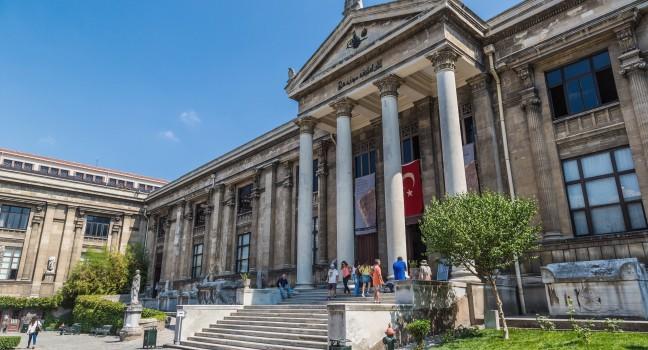İstanbul Arkeoloji Müzeleri

Step into this vast repository of spectacular finds, housed in a three-building complex in a forecourt of Topkapı Palace, to get a head-spinning look at the civilizations that have thrived for thousands of years in and around Turkey. The main museum was established in 1891, when forward-thinking archaeologist and painter Osman Hamdi Bey campaigned to keep native antiquities and some items from the former countries of the Ottoman Empire in Turkish hands. The most stunning pieces are sarcophagi that include the so-called Alexander Sarcophagus, found in Lebanon, carved with scenes from Alexander the Great's battles, and once believed, wrongly, to be his final resting place. A fascinating exhibit on Istanbul through the ages has artifacts and fragments brought from historical sites around the city that shed light on its complex past, from prehistory through the Byzantine period. Exhibits on Anatolia include a display of some of the artifacts found in excavations at Troy, including a smattering of gold jewelry.
Don't miss a visit to the Çinili Köşk (Tiled Pavilion), one of the most visually pleasing sights in all of Istanbul—a bright profusion of colored tiles covers this onetime hunting lodge of Mehmet the Conqueror, built in 1472. Inside are ceramics from the early Seljuk and Ottoman empires, as well as brilliant tiles from İznik, the city that produced perhaps the finest ceramics in the world during the 16th and 17th centuries. In summer, you can mull over these glimpses into the distant past as you sip coffee or tea at the café in the garden, surrounded by fragments of ancient sculptures.
The Eski Şark Eserleri Müzesi (Museum of the Ancient Orient) transports you to even earlier times: a majority of the panels, mosaics, obelisks, and other artifacts here, from Anatolia, Mesopotamia, and elsewhere in the Arab world, date from the pre-Christian centuries. One of the most significant pieces in the collection is a 13th-century BC tablet on which is recorded the Treaty of Kadesh, perhaps the world's earliest known peace treaty, an accord between the Hittite king Hattusili III and the Egyptian pharaoh Ramses II. Also noteworthy are reliefs from the ancient city of Babylon, dating from the era of the famous king Nebuchadnezzar II.



